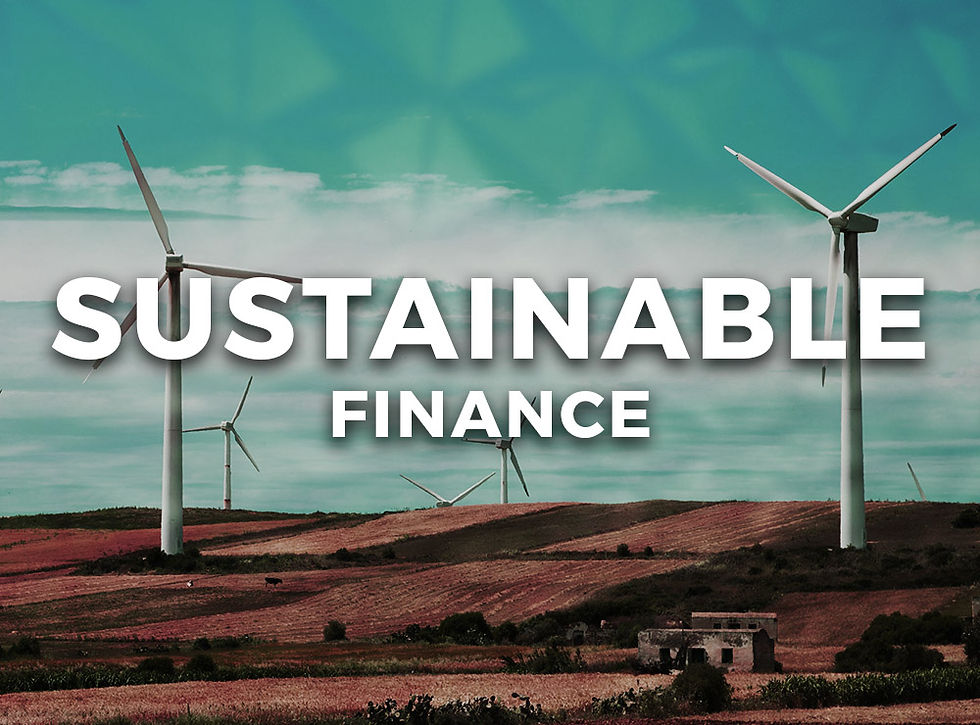ESG investing: Is best-in-class the way to go?
- Robin Powell

- Jul 1, 2022
- 5 min read
Updated: Nov 12, 2024
By LARRY SWEDROE
Sustainable investing has grown dramatically in the past decade. By 2020, environmental, social and governance (ESG) investing accounted for more than one-third of total assets under management in the United States, or about $17 trillion. An issue for investors is that today there are seven main providers of ESG ratings: CDP, Trucost, MSCI, Sustainalytics, Thomson Reuters, Bloomberg and ISS. Each not only has its own screening and weighting schemes but also different methodologies. For example, ESG scores can be determined relative to all companies, or they can be determined relative to those in the same sector/industry — a best-in-class approach.
Best-in-class has the advantage of rewarding companies that are helping the transition to a more sustainable planet by investing in renewable sources of energy rather than depriving them of the capital they need to make the transition. In addition, investors can employ positive screens (including companies that distinguish themselves for the characteristics of corporate social responsibility) or exclusionary screens (for example, eliminating from consideration entire industries). These differences in rating methodologies lead to wide disparity of ratings for the same company, creating problems for investors and researchers alike.
Alberto Burchi and Bogdan Włodarczyk contribute to the sustainable investing literature with their study Best-in-Class Socially Responsible Investment:The Actual Performance Evaluation Between the US and Europe, published in the 2022 second issue of the Journal of Sustainable Investing, in which they examined the performance of socially responsible investments (SRIs) in U.S. and European financial markets, assuming the role of investors who base their choices on a best-in-class approach. (Note that while SRI, ESG and sustainable investing are often used interchangeably, SRI is about aligning a portfolio to one’s personal values; ESG is an attempt to attach economic value to things we believe have worth but are not priced by the market; and sustainable investing is a broader category that includes SRI, ESG and impact investing, which aims to generate specific, beneficial social or environmental effects in addition to financial gains.)
The researchers used a database of stocks in the S&P 500 and the STOXX Europe 600 indexes and covered the period 2002-2016. They also assumed a particularly demanding investor, limiting the investable universe to ten percent of the stocks having the best ESG ratings and imposing a concentration limit for each position of five percent. Following is a summary of their findings:
European companies, on average, had better ESG scores than U.S. companies.
In the U.S., SRI investments earned lower returns than non-SRI investments.
In Europe, SRI investments earned lower returns and experienced more volatility.
SRIs had greater capacity to reduce risk in terms of both losses and recovery speed.
The best results were obtained by investing in all the stocks in the indexes, as applying ESG screening criterion brought a decrease in performance.
In the U.S., the cost due to the adoption of a social selection criterion increased as the investor’s risk appetite grew. The cost of SRI in Europe was more pronounced for medium- and low-risk portfolios.
Under negative market conditions, SRIs showed smaller losses and a better ability to recover pre-crisis levels—consistent with research showing that high ESG-scoring firms have less risk.
The results were robust to a number of tests, including selection criteria and limits on concentration.
Their findings led Burchi and Włodarczyk to conclude that “the socially responsible investors that adopt the ‘best in class’ approach must pay a cost in terms of a lower investment-risk premium.” They added: “The cost associated with the adoption of ESG criteria depends on the investor’s appetite for risk. … The cost tends to increase as the market risk in the portfolio grows.” And finally: “The adoption of ESG logics involves a reduction in the number of alternatives and therefore a worsening of the possibilities in the risk-return area. However, after assessing the loss of potential efficiency it is possible to acknowledge the advantage for the risk management of SRI opportunities, in particular for improving the negative tails of the distributions of returns.”
Evidence aligns with theory
When the empirical findings align with economic theory,it instills confidence in both the findings and the theory. As Sam Adams and I explain in Your Essential Guide to Sustainable Investing, economic theory suggests that if a large enough proportion of investors choose to favor companies with high sustainability ratings and avoid those with low sustainability ratings (i.e., sin businesses), the favoured companies’ share prices will be elevated and the sin-stock share prices will be depressed. In equilibrium, the screening out of certain assets based on investors’ tastes should lead to a return premium on the screened assets. The result is that the favoured companies will have a lower cost of capital because they will trade at a higher price-to-earnings (P/E) ratio. The flip side of a lower cost of capital is a lower expected return to the providers of that capital. And the sin companies will have a higher cost of capital because they will trade at a lower P/E ratio, the flip side of which is a higher expected return to the providers of that capital.
The resulting hypothesis is that the above-market expected returns are required as compensation for the emotional cost of exposure to offensive companies. On the other hand, investors in companies with higher sustainability ratings are willing to accept lower returns as the cost of expressing their values.
There is also a risk-based hypothesis for the sin premium. It is logical to hypothesise that companies neglecting to manage their ESG exposures could be subject to greater risk, i.e., a wider range of potential outcomes, than their ESG-focused counterparts. The argument is that companies with high sustainability scores have better risk management and better compliance standards. The stronger controls lead to fewer extreme events such as environmental disasters, fraud, corruption and litigation as well as their negative consequences. The result is a reduction in tail risk for high-scoring firms relative to the lowest-scoring firms. The greater tail risk creates the sin premium.
With that said, given the trend to sustainable investing, firms with high sustainable investing scores are earning rising portfolio weights, leading to short-term capital gains for their stocks — their realized returns rise temporarily. However, the long-term effect is that higher valuations reduce expected long-term returns. The result can be an increase in green asset returns even though brown assets earn higher expected returns. In other words, there can be an ambiguous relationship between carbon risk and returns in the short term.
Investor takeaways
Economic theory posits that sustainable investors should expect to earn lower returns, accompanied by lower risks, for expressing their values through their investments. The empirical research findings support the theory. The evidence demonstrated that even a best-in-class approach, which improved diversification and provided exposure to lower ESG scoring stocks, resulted in lower returns over the 2002-2016 period studied by Burchi and Włodarczyk. However, the increasing popularity of sustainable investing, accompanied by huge cash inflows, led to green stocks outperforming brown stocks by 7 percent per annum from 2018 through 2020. Thus, it is certainly possible that while green stocks have lower expected returns, they could outperform over the near term if cash inflows continue to drive their relative valuations sufficiently higher to overcome the ex-ante brown premium (as they did from 2018 through 2020). If that is the case, the ex-ante brown premium would increase further as the spread in valuations between green and brown stocks widens.
© The Evidence-Based Investor MMXXIV. All rights reserved. Unauthorised use and/ or duplication of this material without express and written permission is strictly prohibited.




